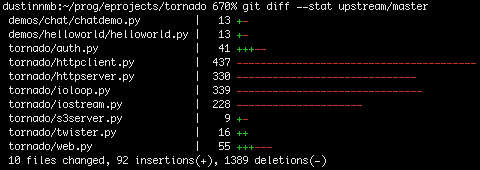So what’s this about tornado?
The friendfeed guys created an awesome web site with what was obviously (from the outside) quite awesome technology. A couple days ago, they released the the technology behind the site.
The Problems
Tornado really is two different things:
- A great framework for building web sites.
- A low-level networking toolkit.
Most of us who use twisted were quite surprised to find out that rather than using twisted’s awesome networking core, they reimplemented a bunch of it. Moreover, they kind of had really vague negative things to say about twisted. It’s not clear what problem they had with it, but as stated the logic kind of fails:
- Twisted doesn’t have a good web framework.
- No major web sites run on twisted.
- So… we’re going to build something completely from scratch.
Now, I certainly build stuff from scratch unnecessarily all the time, and I also don’t want to seem unthankful for the free gift brought to us from our friendfeed friends, but in its current state, it’s a technological island.
On one hand, you have low-level missing pieces. From the bottom, you’ve got multiplexing implementations. twisted has been around a while, so it supports native multiplexors including those for select, poll, epoll, kqueue, CoreFoundation, wxPython, win32, gtk, glib, qt, and probably more. While some of them are less interesting than others, that’s a lot of catching up to do. Some user already began adding kqueue support, but it’s more of an example of the kinds of things that you don’t get for free.
At the high end, there is an incredible selection of protocol implementations from twisted you just can’t use. If you’re building a web site on an asynchronous framework, you don’t ever want to block to get further data. So whatever your networking framework, you need it to have a sane way of asychronously communicating to all of your dependencies.
They wrote an http client, though there are things I do with the twisted http client that I don’t see a way to do with the tornado client such as parse infinite xml streams from http responses.
The Solution
So instead of just generally being frustrated, I thought I’d see what it’d take to rip out the stuff that was reimplemented and use just core twisted.
The original tornado code doesn’t have much in the way of tests, so it’s currently in the “appears to work” state, but this is what got me there:

That is, with an offset of -1,297 lines of code, it can be observed to work for the cases I tried, although I’m sure there are still lines that need to be deleted before everything works.
The good news is that this means that you get all the richness of twisted and the good parts of tornado combined.
Everybody wins.
So go grab the code and see if it works in your app, or send me some patches for parts you were able to explore a bit more deeply.

